「龙腾网」英特尔未来计划:热量子比特,冷控制芯片和快速测试
正文翻译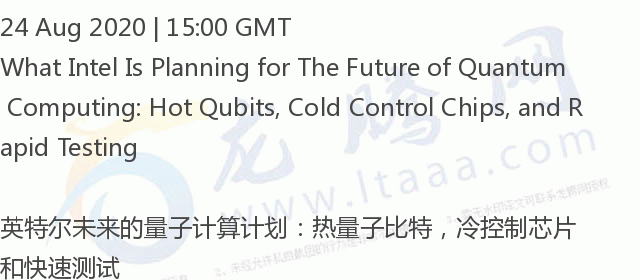 文章插图
文章插图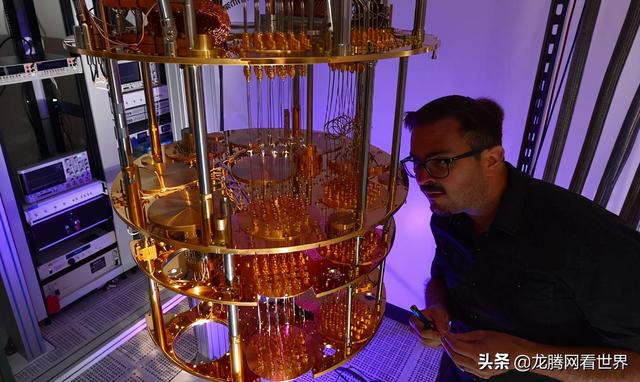 文章插图
文章插图
Quantum computing may have shown its “supremacy” over classical computing a little over a year ago, but it still has a long way to go. Intel’s director of quantum hardware, Jim Clarke, says that quantum computing will really have arrived when it can do something unique that can change our lives, calling that point “quantum practicality.” Clarke talked to IEEE Spectrum about how he intends to get silicon-based quantum computers there:Jim Clarke on…Why quantum computers will be made of siliconHow silicon spin qubits workWhat needs to happen before quantum error correction works“Hot” silicon spin qubitsWhat problems keep him up at night量子计算可能在一年多前就已经显示出它对经典计算的“霸权” , 但它还有很长的路要走 。英特尔的量子硬件主管吉姆·克拉克(Jim Clarke)说 , 当量子计算能够做出一些独特的改变我们生活的事情时 , 它才会真正地到来 , 我们称这一点为“量子实用性” 。 克拉克对IEEE Spectrum阐述了他打算如何建造基于硅的量子计算机 , 包括:为什么量子计算机将由硅制成硅自旋量子比特是如何工作的实现量子纠错前需要发生的事情“热”硅自旋量子比特什么问题让他晚上睡不着觉
IEEE Spectrum: Intel seems to have shifted focus from quantum computers that rely on superconducting qubits to ones with silicon spin qubits. Why do you think silicon has the best chance of leading to a useful quantum computer?IEEE Spectrum: 英特尔似乎已经将焦点从依赖超导量子比特的量子计算机转移到使用硅自旋量子比特的量子计算机上 。你为什么认为硅最有可能导致一台有用的量子计算机?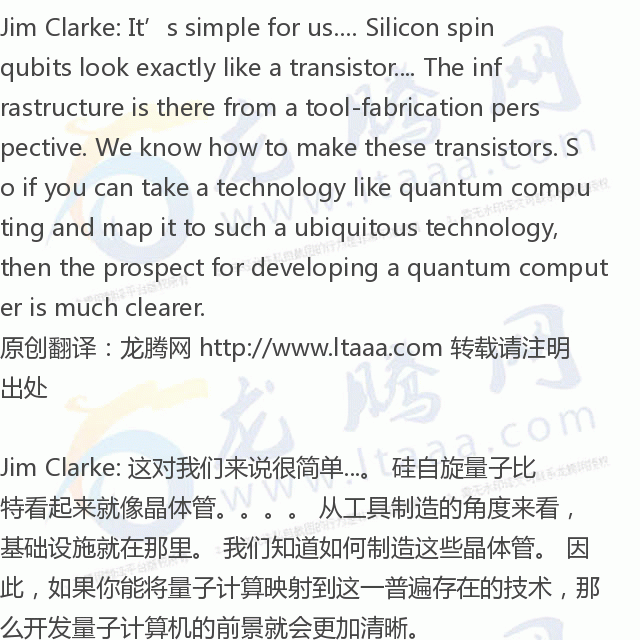 文章插图
文章插图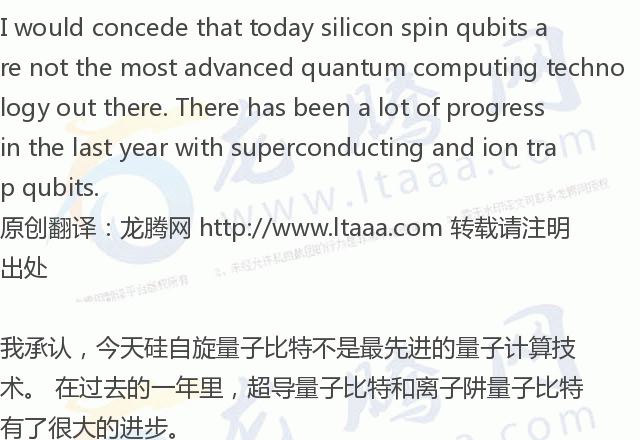 文章插图
文章插图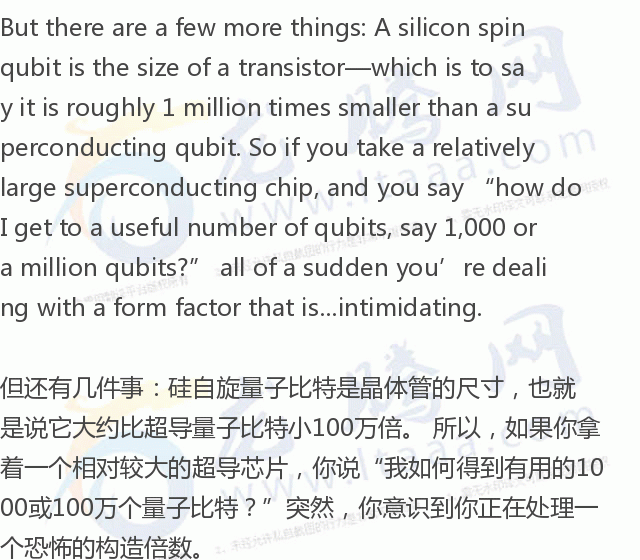 文章插图
文章插图
We’re currently making server chips with billions and billions of transistors on them. So if our spin qubit is about the size of a transistor, from a form-factor and energy perspective, we would expect it to scale much better.我们目前正在生产服务器芯片 , 上面有数十亿个晶体管 。因此 , 如果我们的自旋量子比特是一个晶体管的大小 , 从构造倍数和能量的角度来看 , 我们预计它能够更好地规模化 。
Spectrum: What are silicon spin qubits and how do they differ from competing technology, such as superconducting qubits and ion trap systems?Spectrum: 什么是硅自旋量子比特 , 它们与超导量子比特和离子阱系统等竞争技术有何不同? 文章插图
文章插图
We do something similar with the spin qubit, but it’s a little different. You turn on a transistor, and you have a flow of electrons from one side to another. In a silicon spin qubit, you essentially trap a single electron in your transistor, and then you put the whole thing in a magnetic field [using a superconducting electromagnet in a refrigerator]. This orients the electron to either spin up or spin down. We are essentially using its spin state as the zero and one of the qubit.我们做了一些类似自旋量子比特的东西 , 但也有点不同 。你打开一个晶体管 , 你有电子从一边流向另一边 。在硅自旋量子比特中 , 你基本上是在晶体管中捕获了一个电子 , 然后把整个东西放在磁场中[在制冷机中使用超导电磁铁] 。这使电子要么自旋向上 , 要么自旋向下 。我们基本上使用它的自旋状态作为量子比特的0态和1态 。
That would be an individual qubit. Then with very good control, we can get two separated electrons in close proximity and control the amount of interaction between them. And that serves as our two-qubit interaction.这将是一个单独的量子比特 。然后 , 在很好的控制下 , 我们可以将两个分离的电子靠近 , 并控制它们之间相互作用的大小 。这就是我们的两量子比特之间的相互作用 。
So we’re basically taking a transistor, operating at the single electron level, getting it in very close proximity to what would amount to another transistor, and then we’re controlling the electrons.因此 , 我们基本上是将单个电子水平上工作的一个晶体管 , 使它非常接近另一个晶体管 , 然后我们控制电子间的相互作用 。
Spectrum: Does the proximity between adjacent qubits limit how the system can scale?Spectrum: 相邻量子比特之间的接近是否限制了系统如何规模化?
Clarke: I’m going to answer that in two ways. First, the interaction distance between two electrons to provide a two-qubit gate is not asking too much of our process. We make smaller devices every day at Intel. There are other problems, but that’s not one of them.Clarke: 我要用两种方式来回答这个问题 。首先 , 控制两个电子之间的相互作用距离来实现两量子比特门操作 , 并不要求我们太多的处理 。我们在英特尔每天都生产更小的设备 。这里有其他的问题 , 但这不是其中之一 。
- 闲鱼|电诉宝:“闲鱼”网络欺诈成用户投诉热点 Q3获“不建议下单”评级
- 王兴称美团优选目前重点是建设核心能力;苏宁旗下云网万店融资60亿元;阿里小米拟增资居然之家|8点1氪 | 美团
- 手机基带|为了5G降低4G网速?中国移动回应来了:罪魁祸首不是运营商
- 互联网|苏宁跳出“零售商”重组互联网平台业务 融资60亿只是第一步
- 峰会|这场峰会厉害了!政府企业专家媒体共议网络内容生态治理
- 桌面|日常使用的软件及网站分享 篇一:几个动态壁纸软件和静态壁纸网站:助你美化你的桌面
- 互联网|强制收集个人信息?国家网信办拟为38类App戴紧箍
- 发展|我省要求互联网平台坚持依法合规经营 推动线上经济健康规范发展
- 荣耀V30|麒麟990+40W快充,昔日猛将彻底沦为清仓价?网友:太遗憾
- 健身房|乐刻韩伟:产业互联网中只做单环节很难让数据发挥大作用
